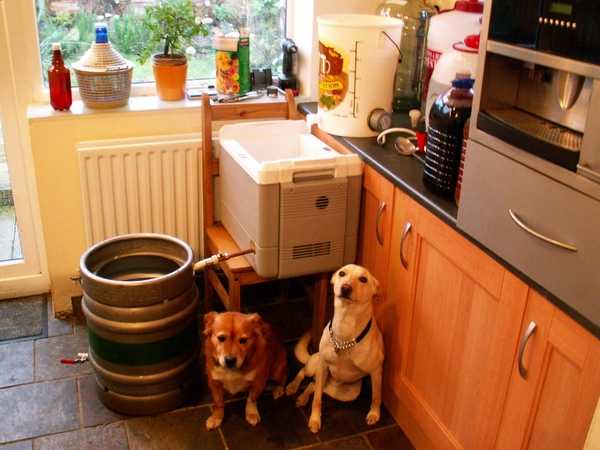I really like you last concept and the steam generator sounds really interesting.
I did some calcs on it last night and its totally feasible. The steam generator will raise the mash temp by up to 20F per minute for a 10 pound grain bill ! Compared with about 3F per minute for a good RIM or HERM system. It will no longer be a problem to do really fast, accurate mash temp changes. Taking the mash from 128F to 170F will require the addition of about 2/3rds of a cup of water, injected as steam.
I am going to call it Steam Injected Mash System or SIMS.
I've got a rudimentary parts list as well. Time to start testing.
I ordered my arduino board this morning. It will be a week or so until it gets here. (USPS)
"Not sure if you can get your hands on a pipe bender, but this would be a one of a kind system. I think I may make mine this way."
I am going to built mine out of square tubing, which doesn't bend well. I think I may get it galvanized. I think that is a pretty durable finish and it looks great too. And it is much cheaper than SS or aluminum, which won't stand up to burner heat. A local company will DIP my brewing stand, trailer hitch, boat hitch, etc. up to 350 pounds of stuff for $100 ! You can't buy much SS for $100 !
Also thanks for all the controller info. I am a mechanical guy, but would love know control systems better. I have done a little ladder logic, so I was going to use a plc for my system. But your info has given me the confidence to attempt a little C++. Please keep posting your progress and I would love to have a look at the code when you get there.
No problem and sure. I haven't done much reading yet, but that arduino board is designed for non technical people like artists and such. It should be very easy to use.
Thanks for generating the 3Ds !
I'm interested but i need to know how difficult the welding will be. I have limited experience, and know very little about the materials and equipment needed to pull this off. Is this something a novice could do?
Depends how much time and money you want to spend learning to weld ! Its not going to be hard to weld, just stick or mig should do it. There is no SS or aluminum welding. Buy a welder and practice for a bit.
I can't believe how much $$ people pay for sculptures compared to how easy they are to build.
Remember that you could always bolt your structure together.
Are you going to offer tech support for the controller ? Programming is a another area where I have no experience.
Tech support ? Nope, not formally ! With enough good homebrew offered, maybe ! I'll answer questions and put together a how to.
All this considered, could I build this and brew without burning the house down? I think my wife would be way more pissed than if I messed up the kitchen!
You have to be careful welding ! Sparks can start things on fire. With respect to the electric heating elements, everything will be on a plug in, so just unplug it if it runs away. You could also wire switches into the circuits to shut things down. And you should have plenty of water around to put out the fire.
I consider propane burners to be much more dangers than electric heating elements, but maybe that is just me. All it takes is one gust or a pot boil over to blow out the burner and you have raw natural gas spewing everywhere !
With a ground fault interrupter, its almost impossible to get a shock.





